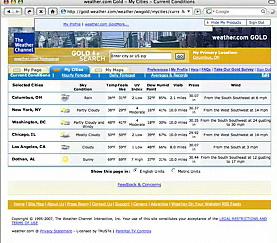AT&T, T-Mobile, Verizon Wireless, and others are in a deal with Barclays Bank and Discover Financial Services to allow consumers to buy products and services with a “contactless” swipe of their mobile phones.
A pilot program will begin at retailers in Atlanta and three other selected cities.
I’m glad to see that this is not being done by Visa and Mastercard since those idiots do not know how to make paying-by-mobile work. If it was up to them they would be assessing fees of a dollar or more per transaction, basically killing the whole thing at the start.
Stock at the two largest credit card companies plummeted on the news while at Discover, the fourth-largest credit card processor behind Visa, MasterCard and American Express, shares jumped nearly 3 percent.
If you are a retailer you most likely have no love for Visa or MasterCard because of their constant raising of transaction fees. Congress last month passed restrictions on the fees these vultures can charge to retailers on debit transactions.
Hopefully Discover will do the right thing and charge very small fees for transactions that fall below ten dollars. How many times have we seen retailers put up notes on cash registers that tell us that they require transactions of at least ten dollars to qualify for payment by credit card? After all, who can make money selling a roll of mints for a dollar and incurring fees of more than 50 cents?
I’m not talking about percent transaction fees, usually 1 to 5 percent of the billed amount, I’m talking about the per transaction fees, minimum monthly fees, and other exhorbitant fees that merchant account providers assess. While Visa and Mastercard will gladly suck the blood out of credit card users and retailers, some merchant account providers make Vlad the Impaler look like a boy scout.
For example, some providers may charge 25 to 50 cents per transaction in addition to adding a small percentage fee of their own on top of those of the credit card issuers. Some even charge a minimum monthly transaction fee which requires that the merchant process a set amount of billing each month. These fees are around $15 each month although I have seen much higher.
If this new payment alliance wants to see pay-by-cell succeed not just in replacing the use of credit cards but in small one buck transactions as well then they have to insure that merchant account providers treat small transactions differently.
If they can do this, then we can be on our way to paying for everything with our cellphones. I mean everything: parking meters, candy machines, subway tolls.
But the real deal would be in micropayments, such as paying for reading a news article online or downloading a copyrighted work. I certainly would never pay 2 or 3 bucks a week to read an online newspaper in the UK but I would not hesitate to pay 1/20th of a penny to read a single article from the same source. It wouldn’t bother me if at the end of the month I spend ten or twenty bucks getting information I need from hundreds of sources. There are hundreds of millions of me in the world. Do the math.




